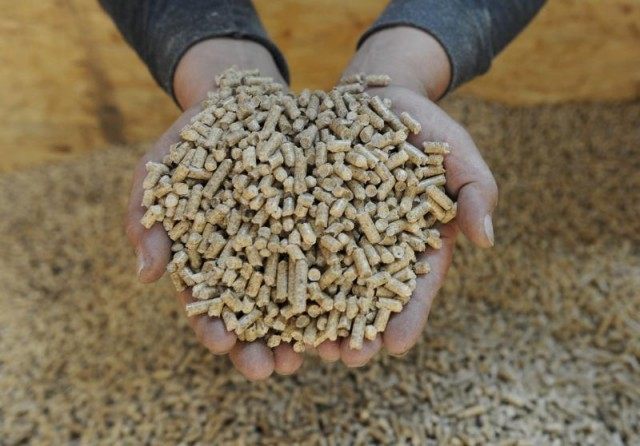The director of the National Trust, Helen Ghosh has told the BBC that the Trust plans to “show people what good looks like” by using renewable energies derived from hydro schemes and biomass. Unfortunately for Ghosh, biomass schemes are responsible for the destruction of North American forests on a massive scale. (h/t Bishop Hill)
Speaking on Radio 4’s Today programme, Ghosh told presenter John Humphrys that the Trust plans to source 50 percent of the energy used in National Trust properties from renewable energy sources by 2020. “Lots of hydro schemes across the country; lots of biomass boilers,” she said. They also plan to decrease their energy use by 20 percent.
Unfortunately for Ghosh, most of the biomass energy used in British energy plants comes from wood pellets imported from North America, where slow growing deciduous forests in North Carolina are being clear felled. The forests are home to native species including the pileated woodpecker – the world’s largest, with a wingspan of nearly two feet. Some of the trees in the forest can take up to one hundred years to grow to full size.
Thanks to the UK’s commitment to deriving at least ten percent of its total energy usage from biomass by 2020, the Drax power station in North Yorkshire, Britain’s largest power station, has already converted from burning coal to burning North American wood pellets, the Daily Mail has reported. It gets through more than a million metric tonnes of pellets a year, according to Nigel Burdett, Drax’s head of environment.
Ironically, the wood pellets actually produce three percent more CO2 than the coal the station used to burn, and more than twice as much as burning natural gas would produce. Yet environmentalists insist that biomass is more sustainable.
Andrew Montford of the Bishop Hill blog commented “this does seem quite a strange policy for the National Trust to adopt. Is this [felling of deciduous woodlands] really what the National Trust wants to see happening?
During the course of the interview Ghosh also insisted that climate change is one of the biggest threats to the National Trust’s properties and land, but was unable to explain how or why. The Trust is one of Britian’s largest landowners, holding around a quarter of a million hectares of countryside and 700 miles of coastline.
In what was clearly meant to be an ‘open goal’ question, Humphrys asked Ghosh: “Climate change is the biggest threat. Based on…?”
But Ghosh’s answer was a masterclass in obfuscation. In an answer that spanned nearly a whole minute, she utterly failed even to attempt to give any evidence that climate change was happening, let alone a threat.
Instead she replied: “It’s absolutely in the tradition of the National Trust that we always try to focus on the conservation challenge of the day. […] now the main challenge to our conservation purpose is the destruction of habitats, of wildlife[…] two causes for that, we believe: first intensive land management [… But] For the future, and we see this on our coastline, in the countryside, in our houses, climate change, we think, is the big threat to us.”

COMMENTS
Please let us know if you're having issues with commenting.